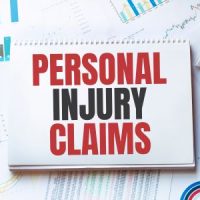Multiple Cause Accidents: What Are Intervening and Superseding Cases?

It would be nice if, in every personal injury case, it was always easy to tell who caused a victim’s injuries. A negligent defendant did something wrong, it caused your injuries, and that’s that.
But that’s not how the real world actually works. In the real world, in injury cases, there are often multiple factors and actors that work in tandem, to cause a victim’s injuries.
When another event happens after an original accident to cause or contribute to an injury, that cause can either be called an intervening, or a superseding cause.
Subsequent Causes
Let’s look at a typical example.
Let’s say that Jack gets into a car accident, and he is injured. He goes to the hospital. In the hospital, Jack acquires an infection, which of course, is caused by the hospital’s negligent failure to keep its premises clean and safe. The infection causes Jack to lose a limb.
So who caused Jack’s injury, the loss of the limb? Was it the original driver that caused the car accident, or was it the hospital that allowed Jack to get an infection?
Intervening and Superseding Cause
The question relates to whether the hospital’s malpractice was intervening or superseding.
An intervening cause is something that causes, worsens, or contributes to, a victim’s injuries, after the original act of negligence. But the original negligent actor is still liable. So, in our example above, if the hospital’s negligence was an intervening cause, the negligent driver could still be held liable for all of Jack’s injuries.
A superseding cause is also something that happens after the original accident. But with a superseding cause, the negligent act that happens after the original accident is so unforeseen, that it “takes the place” of the original act of negligence. So, in our example above, the car driver would be absolved of liability, and the hospital would bear full liability for Jack’s loss of his limb.
It’s About Foreseeability
Defendants who are sued, of course, would rather that any subsequent act of negligence be considered superseding, so as to relieve them of liability for your injuries. They often will point the finger at anybody who was negligent after them.
But the real question is one of foreseeability. If the “second cause” of the injury was foreseeable, then the original actor’s negligence will be intervening, and thus, that original actor will still be liable.
Imagine a store that improperly stacks its shelves, with items teetering on the brink of falling. Later, another customer looks through those items, causing them to fall on your head.
It is foreseeable that customers will look through items on shelves, and foreseeable that if the shelves aren’t stacked properly, items will fall. The store’s failure to stack the shelves safely and properly, played a significant and substantial part in the accident—despite the other customer rummaging through the items, which ultimately caused them to fall.
Thus, the subsequent act by the customer shuffling through the items, would be considered intervening, and thus, the store would remain liable.
Call the Boston personal injury lawyers at The Law Office of Joseph Linnehan, Jr. today for help with your case at 617-275-4200 to determine who may be liable for your injuries, and to make sure that every possible Defendant is held responsible to help you after your accident.
Source:
forbes.com/advisor/legal/personal-injury/superseding-cause/
